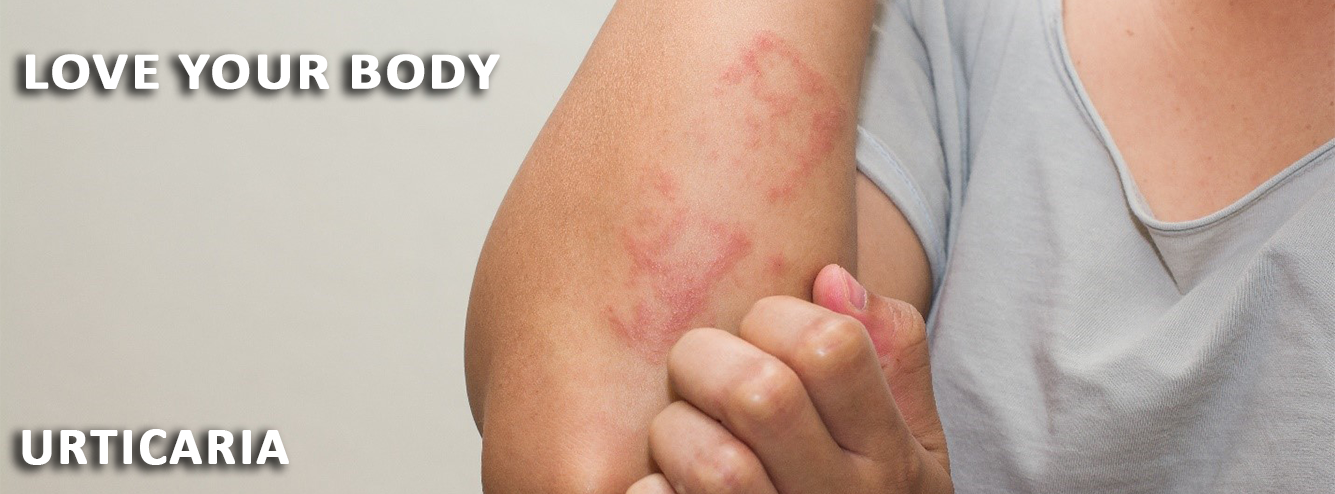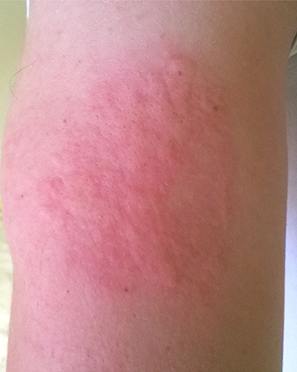

Urticaria also known as hives, weals, welts or nettle rash is a raised, itchy rash that appears on the skin. It may appear on one part of the body or be spread across large areas. The rash is usually very itchy and ranges in size from a few millimetres to the size of a hand. Although the affected area may change in appearance within 24 hours, the rash usually settles within a few days.
Urticaria occurs when a trigger causes high levels of histamine and other chemical messengers to be released in the skin.These substances cause the blood vessels in the affected area of skin to open up (often resulting in redness or pinkness) and become leaky. This extra fluid in the tissues causes swelling and itchiness.

Your GP will usually be able to diagnose urticaria by examining the rash. They may also ask you questions to find out what triggered your symptoms. If your GP thinks that it's caused by an allergic reaction, you may be referred to an allergy clinic for an allergy test. However, if you've had urticaria most days for more than 6 weeks, it's unlikely to be the result of an allergy. You may also be referred for a number of tests, including a full blood count (FBC), to find out whether there's an underlying cause of your symptoms.
In many cases, treatment isn't needed for urticaria, because the rash often gets better within a few days. If the itchiness is causing you discomfort, antihistamines can help. Antihistamines are available over the counter at pharmacies speak to your pharmacist for advice. A short course of steroid tablets (oral corticosteroids) may occasionally be needed for more severe cases of urticaria. If you have persistent urticaria, you may be referred to a skin specialist (dermatologist). Treatment usually involves medication to relieve the symptoms, while identifying and avoiding potential triggers.